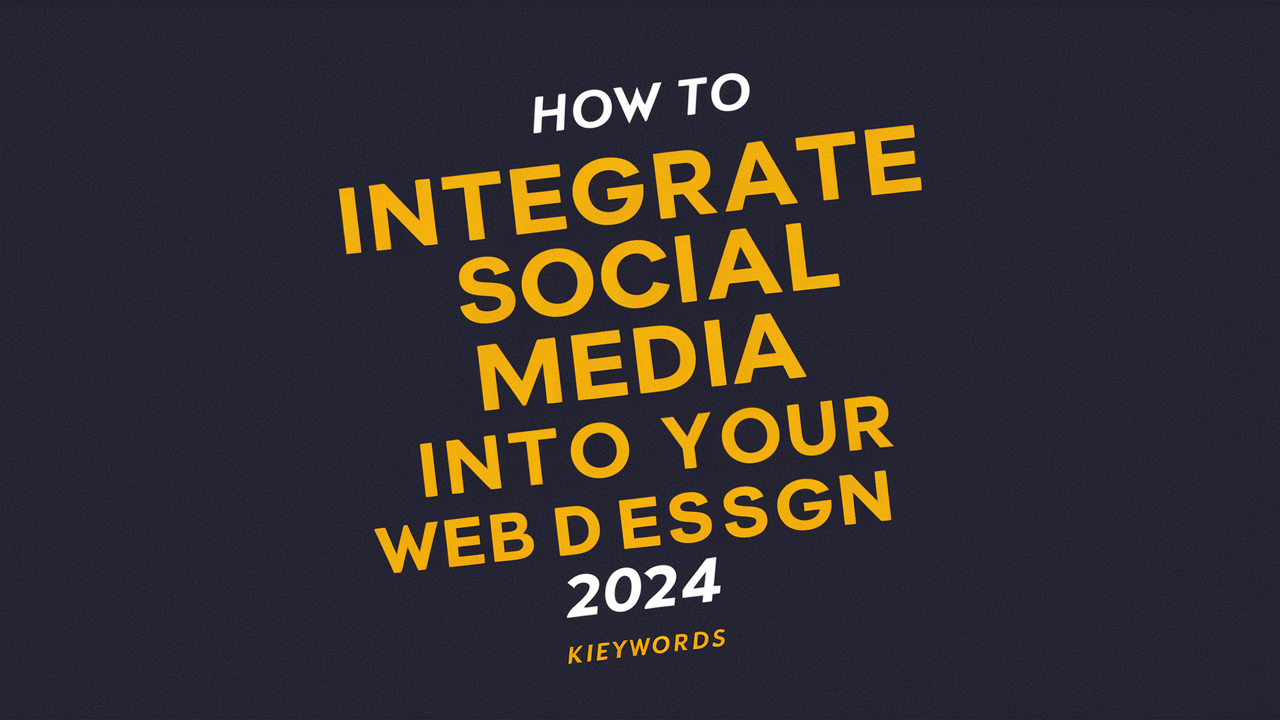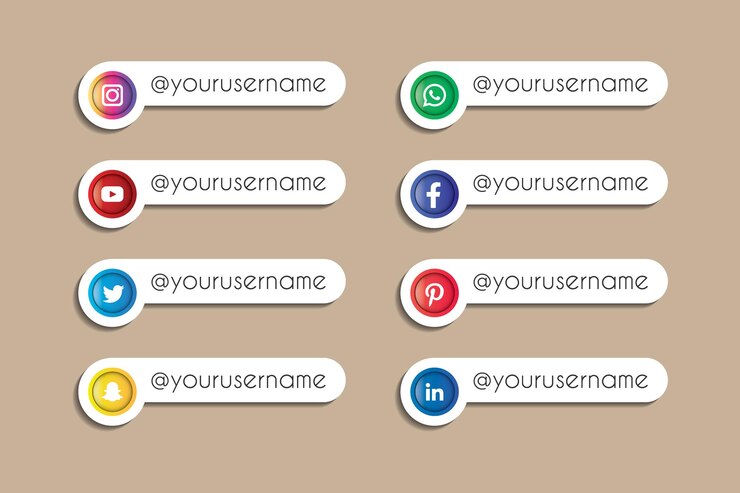
How to Integrate Social Media into Your Web Design 2024
Social Widget Integration: integrate social media into your website you are making paths between your site and profiles on the resources; thus, it will facilitate interactions for sharing information correctly This can increase traffic, create more brand awareness and provide a higher level of engagement. This, in turn, can deliver social proof by demonstrating the popularity and good standing of your brand to site visitors.
So, this piece will be discussing a few tactics on how to use social media properly in your web design. How to add social media feeds or sharing buttons, use Social Login and how the concept of Social Proof help your pages. We will also address: How to align the brand with a consistent voice and across platforms, metrics for social media integration success.
Integrating social media into your web design can facilitate a more dynamic and interactive experience for users, help with promoting your content through social sharing, as well increase the rate at which you attract organic traffic to ultimately generate leads or sell products.
1. Embedding Social Media Feeds to Your Site
If you want to integrate your website design with social media directly, including hashtags may not be the way. Incorporate Social Media Feeds One of easiest ways that makes your web pays more attention on all these platforms is by using addition an element for a fewaccount feeds ready through different channels. This will enable you to update users directly on your website with the post made in social media (synchronised), keeping fans engaged and driving them through various platforms.
In this post I will present you some good practices and advice concerning how to successfully embed social media feeds to your website:
a) Select the Proper Platforms: Each social media platform might not be essential to your audience or enterprise. Incorporate streams from the platforms that you are most engaged and where your target audience is engaging with you. Whether it’s Instagram for companies with appealing visual aesthetic, Twitter for use in news announcements and updates or LinkedIn if your target market is made up of B2B businesses.
b) Opt for a Strategic Placement: The placement of your social media feed can act as an accelerator to improve its applicability. Think about adding one to your homepage or blog as a way of sharing any recent news, updates, facts that you wish. Product pages on e-commerce sites can use Instagram feeds with products in action.
c) Make It Mobile: Create the social media feed that adapts to different screen sizes and looks great on any device. There are so many users coming to websites on mobile nowadays – It’s important that your feed does not ruin the user experience.
d) Personalization: Well, obviously all social media feed tools come up with customization. Customize the colors, fonts, and layout to make it look consistent without of your website design User experience would suggest that you change the RSS widget to something like thisegrated r rather than having a blog outline.
e) Conditional: If you use lots of social media, definitely seek for a smart content aggregator and filter so that all noise is eliminated. So, check only that content which is most important and attractive for youresent on the site.
Adding social media feeds to your web design isn’t just showing content — it creates a live link between the website and their active social presence. This can be one of the ways to ensure your website stays alive and contemporary while others may not get updated that often. It also allows visitors to see a piece of your brand essence and day-to-day establishment details that makes the audience relate better.
And in the process of displaying your social feeds on your site, you’re driving traffic to these profiles simply by encouraging visitors to follow and interact with you. This could increase the following you already have on your social media and create even more opportunities to engage outside of your website.
2. Social Sharing Buttons

Social sharing buttons are the most obvious way to integrate social media into your web design. Enabling these buttons will allow visitors to quickly share your content with a single click on their social profiles, in any event which improve the exposure and maybe result in additional traffic being sent through to your site.
This is how you can effectively do the social share buttons in your web design:
a) Pick the Best Platforms: When it comes to sharing, not all social media platforms are made equal. Find the platforms that suit best for your content and audience. Facebook, Twitter and LinkedIn are great places to start for many businesses. Also, make sure you add Pinterest and Instagram options if your content is visual.
b) Strategic Placement: Where you put your social sharing buttons can have a massive impact on how often they are clicked. Common placements include:
- Top or Bottom of Blog Posts
- Dangling down one side of the content as users scroll
- Bottom of product descriptions on E-commerce sites
- In your global site sharing header/footer (ideal for ease of access)
c) Must Stand Out: The ideal witty social share buttons appear invisible to the untrained eye yet easily visible. Make use of colors that pop against your site’s design, but still fit in together. Use instantly recognizable social media icons
d) Count Indicators of Social Proof can be Empowering Display Share Count – If an article has been shared many times, show the share count because sharing begets more sharing. So, to avoid creating negative social proof if your content struggles for shares just don’t add the share count!
e) Optimize for Mobile: Make sure your social sharing buttons are well-designed and easy to tap on smartphones. They should be big enough for small digits to easily click, but not so large that they interfere with the mobile experience.
It provides the user with a means to share them, which is why adding social media sharing buttons are not just considered as an additional feature but opportunities for your content to reach out far and beyond what you could expect. It’s like getting an endorsement of your content each time a visitor shares it, and more importantly sharing that with their network thus helping you to reach potential visitors.
Above all, enabling visitors to share your content more easily will make them far likelier do so. A lot of users that appreciate content want to share it, but won’t copy the url and put together a post on their social profiles by themselves.
By judiciously incorporating social sharing buttons into your web design, you can improve discoverability of content via social sharing, extending reach and potentially driving more traffic plus engagement to your website.
3. By the way of Social Login Options :
Using the social media tools in your web design can go beyond making just sharing content easier, but also for improving user experience within a site. Social login features are one of the most powerful ways to do this. Social login offers users an option to use social media credentials and log in on your website preventing necessity of a new registration or another set of password.
How to Use Social Login Options Properly in Web Design
a) Select the Right Platforms: Social login options that resonate with your target demographic. Typically you will see Facebook and Google as two popular options, while a website that is trying to reach professionals or B2B might consider using LinkedIn. However, Twitter/Apple and Amazon can also be valid based on one’s audience.
b) Assertive Placement: Social login buttons should not lie deep in the registration or log-in process They should have the same visibility as your other login form.
c) Benefits: Inform users about the reasons why they should use social login This could be logging in more quickly, enjoying tailored experiences or sharing their adventures on social networks.
d) Design Consistency: While remaining identifiable as social login buttons from the respective platforms, make sure your visually style matches that of housestyle site wide Most social platforms provide computer-generated guidelines regarding the appearance of their login buttons.
e) Offer Traditional Alternatives: Social login is a great convenience, but remember to include an email/password alternative for users who do not wish to connect social accounts.
Not only you are simplifying the login process, but also improving registration rates and collecting useful user data when you integrate social login with your web design. Social login is a useful convenience to have on your site, and there are plenty of users that prefer the quickness it provides when signing up for an account.
In addition to this, social login also offers you access very specific, verified rich user data (within limits ofcourse) which can be leveraged for providing a unique personalised experience in your site. This can involve custom content and/or special offers based on a user’s interests or location.
The use of social login options in your design can alleviate registration friction, increase signups and user engagement on a service as well making custom experiences for users once they get there.
4. Leveraging Social Proof:
The psychological principle known as social proof states that people tend to follow the actions of others in order to perform right behavior for a specific situation. So, when it comes to web design and including social media integration factors – you can use the power of using social proof to win over customers. Display your already engaging social media activity on your website, so that users can see for themselves how well-received and trustworthy your brand is.
How to use social media in your web design for the most effective results using social proof
a) Show Social Media Followers: – Letting your followers count public on different social media platforms can be a good type of social proof. This works well especially if you have a huge fan-base. You can use these counters on your website header or footer.
b) Showcase Social Media Reviews and Testimonials If you ever happened to receive good reviews on your social media networks, then show off those positive testimonials through a simple section of the website. You can do this in the form of a testimonials page or spread throughout your website where appropriate.
c) Social Media Comments : For the article and product pages, you can also consider social media comments as well. It demonstrates a level of proactive involvement with your content and products.
d) Display User-Generated Content: When you have users talking about your products or services on social media, share this type of content to demonstrate that your customers are satisfied. This might be an Instagram feed of customers using your products or tweets containing about your brand.
e) Social Share Counts: If you have a blog post or other content that is shareable, showing how many times the piece of been shared on social media can increase further sharing and establish credibility around its popularity.
The key principles for incorporating these aspects of social proof in your web design are:
- Current: Make sure all social proof is current. Old content can make your brand look stagnant rather than well-maintained.
- Authencitcity: Use only genuine Social Proof When you are caught with fake testimonials, or you inflate your sales/clicks/whatever numbers.
- Keep it Relevant: Always make sure the social proof you are providing is relative to the location or portion of your website where it appears.
- Do Not Overlook It: Yes, the use of social proof is effective-as long as it is used wisely. Planned and in moderation.
- Make SURE your Social Proof elements are optimized for mobile, since a large (and growing) portion of web traffic is attributed to people accessing the internet via phone, and not desktop.
- Privacy Respect: If you’re displaying user-generated or testimonial content on your site, make sure that permission has been granted for those and respect the privacy of such users.
Use your social media integrations in web design to make the most of these! opportunities for increased conversions and brand favorability. Let’s not forget that the aim is to help reinforce your brand credibility and attraction through a social media visibility, bolstering an already more persuasive and absorbing website experience.
Conclusion:
Social media web design is no longer a choice, but rather an essential part of maintaining the interconnected digital landscape in which we live. We have seen that successfully incorporating social media feeds, sharing buttons, login options and utilizing social proof helps engage and inform the user further.
Read our more blogs!




